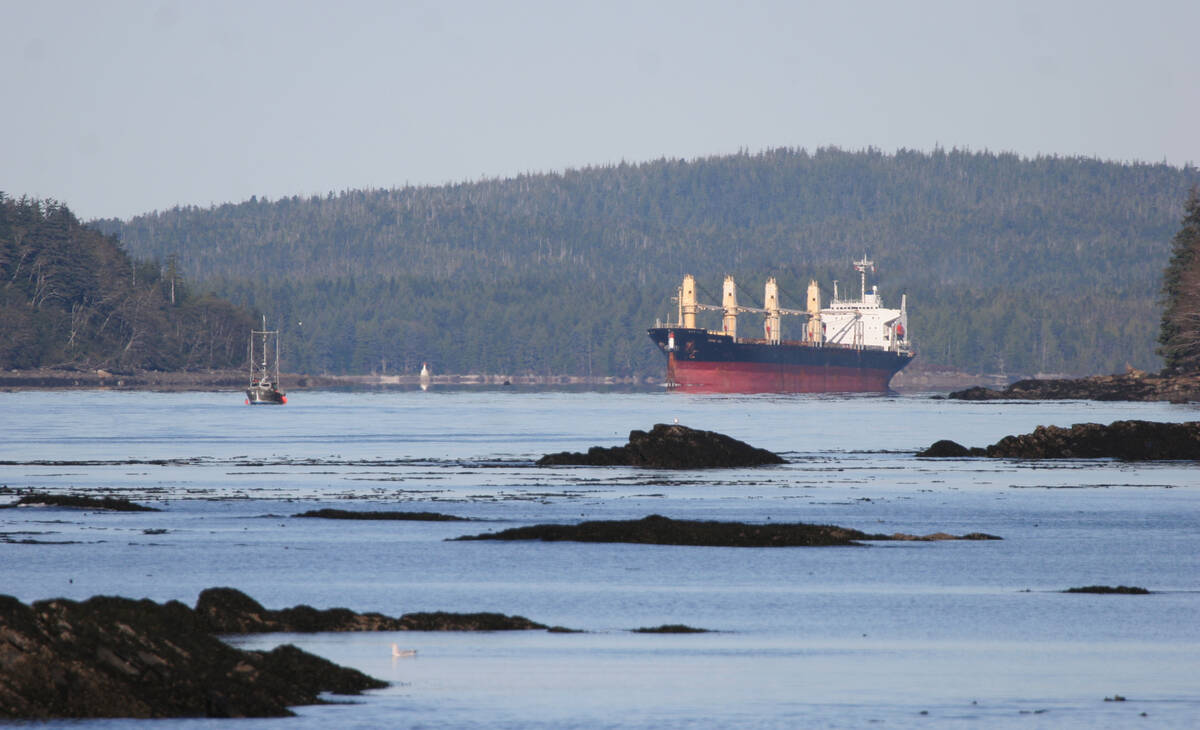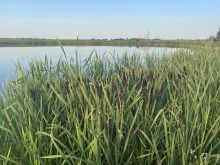EMPRESS, Alta. – At Longmuir Quarter Horses, they believe in foaling their horses the old-fashioned way.
“There’s no in the box stall, up every two hours checking them,” said Dale Howe, who helps run the ranch with his parents Ron and Sheila Howe and his grandfather Jack Longmuir.
“They foal on their own out in the field.”
It’s a system that has worked well for Howe and his family, who now run 60 registered Quarter horse mares on 16 sections of rangeland straddling the Red Deer River on both sides of the Alberta-Saskatchewan border near Empress.
Read Also

Farm groups ask feds for export sales reporting
The Agricultural Producers Association of Saskatchewan and SaskCrops asks the federal government to create an Export Sales Reporting program.
Longmuir started the ranch in 1960, when he bought his first two registered Quarter horses and joined the American Quarter Horse Association.
This year the association will present him with a certificate for registering a foal every year for 45 consecutive years.
He owns the horse ranch and eight sections of land in Alberta and the Howes own the 200-head Deerforks Hereford ranch and eight sections in Saskatchewan, but the three generations run the operation together.
They sell their horses to ranchers, rodeo riders and team ropers, who appreciate a tough animal with good feet and strong survival instincts.
“Those that are using horses big time like our horses because they can go all the time and are structurally sound,” Sheila said. “They’re used to the rough country.”
The country is indeed rough and the foals are allowed to roam its vast expanse all summer with their mothers, sharing the land with cactus, gopher holes and rattlesnakes.
“They’re not babied,” Sheila said. “Where a lot of people just have them in small pens and stuff, these ones are allowed to grow naturally.”
The herd is monitored once a day to keep track of birth dates for the AQHA’s strict record keeping requirements and to make sure none of the horses has hurt itself.
As yearlings, they are brought to the corrals for training and preparation for sale. Otherwise, they’re on their own.
“They grow up to be tough and look after themselves and survive,” Longmuir said.”If they don’t survive out on the open, they’re not much good to us.”
Foaling isn’t the only horse ranching tradition Longmuir and the Howes have maintained. They say they are among the few horse ranches that still practise pasture breeding.
Instead of breeding mares in stalls or using artificial insemination, the family runs its studs with the mares out on the range. It’s an aggressive activity with lots of squealing, biting, kicking and chewing and Sheila acknowledged it’s not for everyone.
“If someone had a $50,000 horse, they wouldn’t bring it to us, but our horses are used to that.”
With a near 100 percent foaling rate, the family’s system has paid off.
They try to raise as much feed as they can for the winter, but a serious drought has forced them to buy most of what they need. They are hopeful the situation will turn around this year.
While Longmuir and his family have kept many of the old ways, they have also been willing to keep up with the times when it comes to horse fashion, albeit reluctantly.
Many horse buyers base their purchases on colour and at the moment the most popular colours are blue roan, red roan and buckskin. As much as the Longmuir and the Howes may despise this fashion trend, that’s what the ranch is trying to produce, while at the same time refusing to compromise on quality.
“It should be on straight conformation, not colour, and bringing the most money, you know, but it doesn’t always work that way,” Dale said.
Sheila added: “There’s some people who need to have the fanciest car and it’s the same thing with horses.”
Not that breeding for colour is fool-proof. One year they had 23 true blue roans and thought they had figured out the formula; the next year they had five.
“Genetics is just a very interesting thing to play around with,” Sheila said. “Just when you think you know something, then it doesn’t work.”
The ranch has had more serious setbacks recently, particularly May 20, 2003.
“BSE has kind of wrecked the horse business, along with a lot of other things,” Longmuir said.
Many of the family’s customers are ranchers who are suffering from the low cattle prices. As a result, Longmuir and the Howes know they must find new customers who have money, such as urban horse owners, trail riders and the oil industry. The problem is they have few if any connections with these markets.
To change that, they attended the Rockin’ W horse sale in Brandon last year that attracts urban buyers from Eastern Canada and the United States.
“Those people would never come to Empress,” Sheila said.
They have also started advertising more, rather than relying on word of mouth.
“Satisfied customers are the best advertising you can get but when your satisfied customers are broke, you’re left holding the bag,” Longmuir said.
The ranch has traditionally held a large sale every other Thanksgiving weekend, but last year it was postponed because of the depressed marketplace. This year they are going ahead, hoping for the best.
“Everybody tells us that we’ve got a good enough reputation that if we do a little more advertising, we’ll be fine, but it is kind of scary,” Sheila said.














